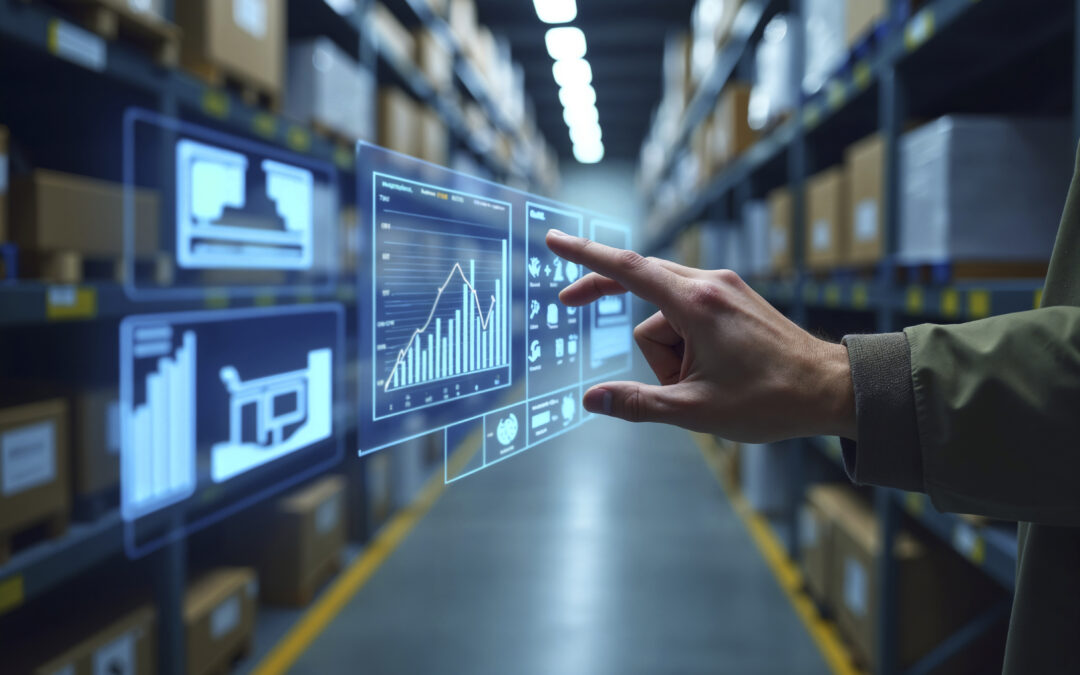In today’s digitally-driven global economy, businesses cannot afford to treat procurement as just a back-office function. Modern organizations are adopting procurement systems that optimize cost savings, ensure compliance, and deliver real-time visibility across the supply chain. But with the rapidly evolving technology landscape, a common question arises: what are the systems used in procurement, and how do they help streamline sourcing, purchasing, and vendor management?
In this article, we’ll break down the essential procurement systems that are transforming organizations worldwide. We’ll explore their features, benefits, popular platforms, and why integrating the right procurement tools is critical for operational efficiency.
1. Introduction to Procurement Systems
A procurement system refers to a software or platform used by organizations to automate and manage their procurement processes, from requisition and vendor selection to invoicing and contract management.
Traditionally, procurement was done manually through emails, spreadsheets, and paper trails. However, with the rise of enterprise technology, businesses now rely on digital procurement tools that reduce manual errors, ensure transparency, and cut operational costs.
2. Why Procurement Systems Matter Today
Procurement is no longer just about buying goods or services at the lowest price. It’s about strategic sourcing, supplier collaboration, risk management, and spend visibility.
Here’s why implementing a modern procurement system is essential:
-
Cost savings through automation
-
Improved compliance with purchasing policies
-
Reduced procurement cycle times
-
Better vendor relationships through structured communication
-
Data-driven decision-making with real-time analytics
As organizations scale, these systems become foundational to their supply chain and finance strategies.
3. Core Categories of Procurement Systems
There isn’t a one-size-fits-all solution. Procurement systems are categorized based on the function they serve. Below are the core types:
a. E-Procurement Systems
E-procurement (electronic procurement) platforms digitize the entire buying process. Features often include:
-
Online requisition and purchase order management
-
Supplier catalogs and marketplaces
-
Approval workflows
-
Budget controls
Examples: SAP Ariba, Coupa, Oracle Procurement Cloud
b. Supplier Relationship Management (SRM) Systems
SRM systems are designed to improve interactions with vendors and suppliers. They offer:
-
Supplier onboarding and qualification
-
Performance tracking and scorecards
-
Risk analysis tools
Examples: Jaggaer, GEP SMART, Zycus SRM
c. Contract Lifecycle Management (CLM) Tools
Contracts are the foundation of procurement. CLM tools help manage:
-
Drafting, reviewing, and approving contracts
-
Renewal alerts and compliance tracking
-
Digital signatures and contract repository
Examples: Icertis, Agiloft, DocuSign CLM
d. Spend Analysis and Strategic Sourcing Platforms
These platforms provide insights into spending patterns and help make strategic sourcing decisions. Key features include:
-
Spend categorization and dashboards
-
Supplier comparison and bidding tools
-
Predictive analytics for sourcing opportunities
Examples: Sievo, Rosslyn Analytics, SynerTrade
e. Purchase-to-Pay (P2P) and Procure-to-Pay Systems
These systems integrate purchasing and payment processes. The focus is on:
-
Purchase order generation
-
Goods receipt and invoice matching
-
Payment processing and audit trails
Examples: Basware, Tradeshift, Coupa P2P
4. Benefits of Using Procurement Systems
Let’s explore the business value and competitive advantage that procurement systems offer:
1. Improved Efficiency
Automating repetitive tasks like approvals, POs, and invoicing saves time and reduces administrative burden.
2. Enhanced Compliance
With set approval workflows and audit trails, businesses reduce fraud and ensure adherence to internal policies.
3. Cost Control and Savings
Real-time spend visibility helps in identifying maverick spending and negotiating better vendor deals.
4. Supplier Collaboration
Portals allow suppliers to manage their profiles, track invoices, and respond to RFQs—building stronger partnerships.
5. Data-Driven Decision Making
Advanced analytics give procurement leaders insight into supplier performance, cost trends, and risk areas.
5. How Cloud Technology Is Transforming Procurement
With the rise of cloud computing, procurement systems have evolved into SaaS-based platforms that are scalable, secure, and accessible from anywhere.
Benefits of cloud-based procurement tools:
-
No infrastructure investment
-
Frequent software updates
-
Seamless integrations with ERP and CRM tools
-
Access to AI-powered analytics and machine learning
Notable cloud solutions: SAP Ariba, Oracle Fusion Cloud, Workday Procurement, Coupa Business Spend Management
6. Integrating Procurement with Other Business Functions
Modern procurement systems do not operate in silos. They are deeply integrated with:
-
ERP systems like SAP, Oracle, or Microsoft Dynamics
-
Finance tools for budget management and payment reconciliation
-
Inventory and warehouse management systems
-
HR tools for managing contingent labor procurement
Integration ensures that procurement aligns with overall business goals, eliminating data duplication and manual intervention.
7. Key Features to Look for in a Procurement System
When evaluating procurement software, organizations should consider:
-
User-friendly interface
-
Mobile accessibility
-
Customization and scalability
-
AI-driven recommendations
-
Regulatory compliance (e.g., SOX, GDPR)
-
Vendor self-service portals
-
Strong security controls
These features help maximize user adoption, efficiency, and long-term ROI.
8. Top Procurement Systems in the Market
Here are some of the leading procurement platforms used by businesses globally:
| Platform | Core Strengths |
|---|---|
| SAP Ariba | End-to-end procurement with global supplier network |
| Coupa | Business spend management and P2P automation |
| Oracle Cloud | Robust procurement and financial integration |
| GEP SMART | Unified source-to-pay platform |
| Jaggaer | Education and government procurement specialization |
Each system caters to different industries and company sizes. Choosing the right one depends on the organization’s complexity and goals.
9. Procurement Systems for SMEs vs. Enterprises
Small and mid-sized businesses (SMEs) need lightweight, budget-friendly solutions, while enterprises require robust, configurable systems.
For SMEs:
-
Precoro
-
ProcureDesk
-
Kissflow Procurement Cloud
For Enterprises:
-
SAP Ariba
-
Coupa
-
Oracle Procurement Cloud
SMEs often prefer plug-and-play solutions with low setup time, while enterprises seek end-to-end automation with deep analytics and compliance features.
10. The Role of AI and Automation in Procurement
Procurement systems today are getting smarter. With AI and automation, businesses can:
-
Predict demand and pricing trends
-
Auto-classify spend categories
-
Detect fraudulent transactions
-
Auto-match invoices and payments
For example, AI tools can recommend the best supplier based on past performance, price history, and delivery timelines—leading to faster and smarter procurement decisions.
11. Challenges in Implementing Procurement Systems
While the benefits are immense, implementation can pose some challenges:
-
Change management and user resistance
-
Integration with legacy systems
-
Data migration and cleansing
-
Training and onboarding
-
Vendor lock-in risks
Overcoming these requires strategic planning, executive sponsorship, and ongoing vendor support.
12. Future Trends in Procurement Technology
As the landscape continues to evolve, procurement leaders should watch for:
-
Blockchain for procurement contracts
-
Sustainable sourcing tools
-
Procurement-as-a-Service (PaaS)
-
Voice-assisted procurement
-
IoT integration for real-time supply tracking
Staying ahead of these trends can give organizations a competitive edge in their sourcing and supply chain operations.
Conclusion
To stay competitive in an increasingly complex global environment, businesses must adopt the right procurement systems that align with their strategic goals. Whether it’s automating purchasing workflows, enhancing supplier relationships, or unlocking spend analytics, today’s procurement software delivers significant value.
From cloud-based platforms like SAP Ariba and Coupa to AI-powered tools and SRM solutions, the procurement technology ecosystem is vast and powerful. By understanding the types of systems available and selecting the right fit, organizations can transform procurement into a strategic function that drives growth, agility, and profitability.
So, if your organization is still relying on spreadsheets and email chains to manage procurement, it’s time to explore modern systems that can take your sourcing and vendor management to the next level.




